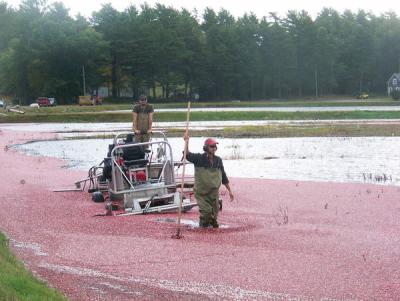Rainfall challenges local produce growers
Consistent rain and lack of sun in the spring have caused headaches for tri-town produce growers.
"I have people come in all the time who say, 'It must be great having all this rain,'" said Chris Makowski, owner of Cervelli Farm in Rochester. "Well, rain is great, but not all at once!"
A representative from the Taunton branch of the National Weather Service indicated that rainfall totals in the New Bedford area (the closest weather monitor to the tri-town) was 5.18 inches in May. The average rainfall in the area for is 3.69 inches.
The problem with the rain was not how much of it fell, but how consistently, Makowski, said.
Cervelli said she and her family have had to tear up several crops, such as peas, that couldn't grow due to the muddy conditions. Additionally, the held off on planting several other crops, due to the muddy conditions left behind.
Due to the conditions, strawberries appeared two to three weeks later than normal.
"A lot of them could have been harvested later," Makowski said, "but I was afraid to leave them near the wet ground any longer."
Makowski isn't the only one to notice the delayed growth; Sippican Lands Trust President Yelena Sheynin noted that plants were flowering about two weeks later than average
Cranberry growers also concur with flowering delays -- in their case, the delay could cause a problem come harvesting season.
"The word I'm getting back from local growers is that the flowers are delayed," said Parker Mauck, Director of Grower Relations for Decas Cranberry. The company operates its own bogs and has growers in Rochester. "The lack of sunny days means flowering plants are about a week behind."
Rainy, windy weather also hurts the fertilization process, as the helicopters used to spread fertilizer over bogs cannot fly in such conditions.
"Any more rainy weather and we will be delayed in that area too," Mauck said.
Another side-effect of the rainy season: disease. Both Mauck and Mattapoisett Land Trust President Mike Huguenin noted that the warm, wet conditions have increased the possibility for crops to get fungal diseases.
"All the warmth and the moisture creates the perfect incubator for plant diseases," Mauk said.
The diseases, he explained, can cause plants to wilt and rot at the soil line. With delayed flowering and no berries on the vines yet, however, cranberry growers are simply keeping an eye on things.
It's a frustrating prospect for blueberry growers, amateur or professional. Huguenin said blueberry bushes are thriving following last year's extended drought.
Perhaps there is good news sprouting, though: June has been more dry.
The average rainfall of the New Bedford area so far this month has been 1.58 inches. According to the National Weather Service, the average for June is 2.8 inches.
Though rain is predicted this weekend, the heaviest rains over the last month or so have only produced a half inch of rain a time, according to officials. Even a half inch of rain per day until the end of the month would equal a little under the average June rainfall.














